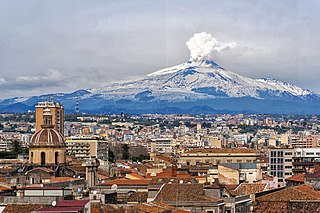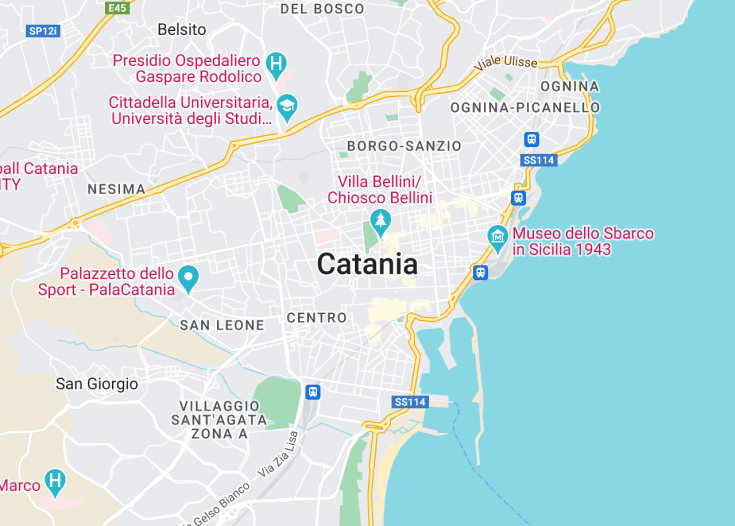Catania, a jewel nestled on the eastern coast of Sicily, offers a captivating blend of history, culture, and natural beauty. This bustling city lies at the foot of Mount Etna, Europe’s largest active volcano, providing a unique backdrop to its vibrant street life and rich architectural heritage. The city’s storied past is evident in its baroque piazzas, ancient ruins, and ornate churches, making it a treasure trove for history enthusiasts and cultural explorers. Visitors are also drawn to Catania’s delectable cuisine, which highlights the fresh, local produce from both the sea and the fertile volcanic earth.
For the best travel experience in Catania, explore the city’s local markets. These bustling hubs offer a taste of authentic Sicilian life and an array of fresh, flavorful produce.
Consider visiting in late spring or early autumn to enjoy pleasant weather while avoiding the peak tourist season and experiencing Catania’s cultural events and vibrant local life.
Top things to do & see in Catania
Select the following sights and activities to discover best tickets and tours available in Catania.
Catania: A Gem at the Foot of Mount Etna
| Country | Italy |
| Time in Catania | GMT+2 |
| Language spoken | Italian |
| Population | 311,584 (as of the latest data from ISTAT 2021) |
| Currency | Euro (€, EUR) |
| Airports |
|
Located on the east coast of Sicily in Italy, Catania is a city rich with history and culture, nestled at the foot of the active volcano, Mount Etna. It’s renowned for its Baroque architecture, vast cultural heritage, and vibrant street life, making it a captivating destination for tourists. Catania’s historical roots are ancient, tracing as far back as 729 BC, founded by the ancient Greeks. Over centuries, it has weathered numerous volcanic eruptions and earthquakes, each time rebuilding with the distinct baroque architectural style that defines its current aesthetic.
The city’s location offers unique opportunities for tourism, combining urban experiences with the adventures that Mount Etna’s natural landscape provides. Visitors often embark on hikes up the volcano, ski on its slopes in winter, or tour the rich agricultural lands that benefit from volcanic soils around the base of Etna. Catania’s cuisine reflects this rich agricultural bounty, featuring vibrant produce, exceptional seafood fresh from the nearby coasts, and robust flavors in dishes like Pasta alla Norma, named after the city’s famous son, composer Vincenzo Bellini.
Education and research thrive here too, anchored by the oldest university in Sicily, the University of Catania, founded in 1434. The city is also a key economic hub in the region, with industries ranging from agriculture and electronics to petrochemicals and logistics. Additionally, cultural festivals and events, such as the feast of Sant’Agata, the city’s patron saint, draw thousands of participants and spectators each year, adding to its vibrant local life.
The juxtaposition of ancient and modern, nature and culture, ordinary life and festival times makes Catania a compelling entity of its own, rich with experiences waiting to be discovered.
Where is Catania?
Located on the eastern coast of Sicily, Italy, Catania is nestled between the Ionian Sea and the towering Mount Etna.
Distances:
| Route | Distance by car | Time by car |
|---|---|---|
| Rome to Catania | 407 mi (655 km) | Approx. 9 hours |
| Milan to Catania | 640 mi (1030 km) | Approx. 11 hours |
| Naples to Catania | 320 mi (515 km) | Approx. 7 hours |
What is Catania famous for?
Catania is famous for its rich and storied history, unique Sicilian Baroque architecture, and as the city at the foot of Mount Etna, offering a unique blend of natural and cultural attractions.
History
Early Settlements and Greek Colonization: 730 BC – 263 BC
The area of Catania was initially settled by the indigenous Sicels before being colonized by Greek settlers in 730 BC, who named it Κατάνη (Katánē). The strategic position on the east coast of Sicily made it a significant cultural and commercial hub. Throughout the next centuries, Catania was influenced by various rulers, including the Carthaginians and the Romans after the First Punic War.
Roman Rule and Byzantine Empire: 263 BC – 902 AD
Following its conquest by Rome in 263 BC, Catania flourished as a thriving center for agriculture and education. The Romans enhanced the city’s infrastructure with theaters, baths, and splendid villas. After the fall of the Western Roman Empire, Catania came under the Byzantine governance, which preserved much of the Roman legacy and introduced Eastern Christian influences, fortifying the city against the emerging threats from invaders.
Arabic and Norman Conquest: 902 – 1194 AD
With the Arab conquest of Sicily in 902, Catania experienced significant changes in social, cultural, and architectural spheres. The Arabs introduced sophisticated irrigation systems, enhancing agriculture, and left a lasting linguistic imprint. Following the Arab era, the Normans captured Catania in the 11th century, blending Arab and Byzantine customs with Western European influences, which led to a unique cultural synthesis visible in the art and architecture of the period.
The Kingdom of Sicily and Modern Era: 1194 AD – Present
After the Norman period, Catania, under successive rulers including the Spanish and Bourbons, continued to grow as an important Mediterranean center. It faced several natural disasters, particularly volcanic eruptions from Mount Etna and earthquakes, the most devastating being in 1693. The subsequent reconstruction in the Baroque style led to the design of many of the city’s iconic landmarks. In the modern era, Catania has transformed into a vibrant urban locality, reflecting a rich historical heritage yet driven by contemporary cultural, educational, and technological advancements. The city’s resilience and ability to reinvent itself through centuries of challenges stand as a testament to the indomitable spirit of its people.
Visit Catania
What to see and do in Catania
Explore the rich history and vibrant culture of Catania, a treasure of Sicily. Visit the majestic Duomo di Catania, at the heart of the city, dedicated to Saint Agatha. Stroll through the historic streets to see the Roman Theatre and Odeon, marvels of ancient architecture. Don’t miss the bustling fish markets or the peaceful gardens of Villa Bellini. For a panoramic view of the city and its environs, hike up to the crater of Mount Etna, an unforgettable experience.
Events in Catania
Catania hosts annual events that reflect its rich cultural tapestry. Noteworthy are the Festivities of Saint Agatha, one of the largest religious festivals in the world, occurring every February. Summer months brighten with the Catania Jazz Festival, drawing artists and audiences globally. Additionally, the autumn brings the Catania Film Fest, celebrating cinematic excellence.
Best time to visit Catania
The ideal time to visit Catania is either during the spring (April to June) or autumn (September to November). These periods offer pleasant weather, fewer crowds, and the chance to experience local festivals such as the Festivities of Saint Agatha and the autumn film festival.
Is Catania worth visiting?
Catania is a captivating destination that offers a unique blend of historical wealth, cultural vibrancy, and natural beauty. Its diverse attractions range from ancient ruins and Baroque architecture to lively markets and dramatic volcanic landscapes. The city’s robust calendar of cultural events and its warm, inviting atmosphere make Catania not just worth visiting, but a must-see on any travel itinerary exploring Italy or the Mediterranean.










